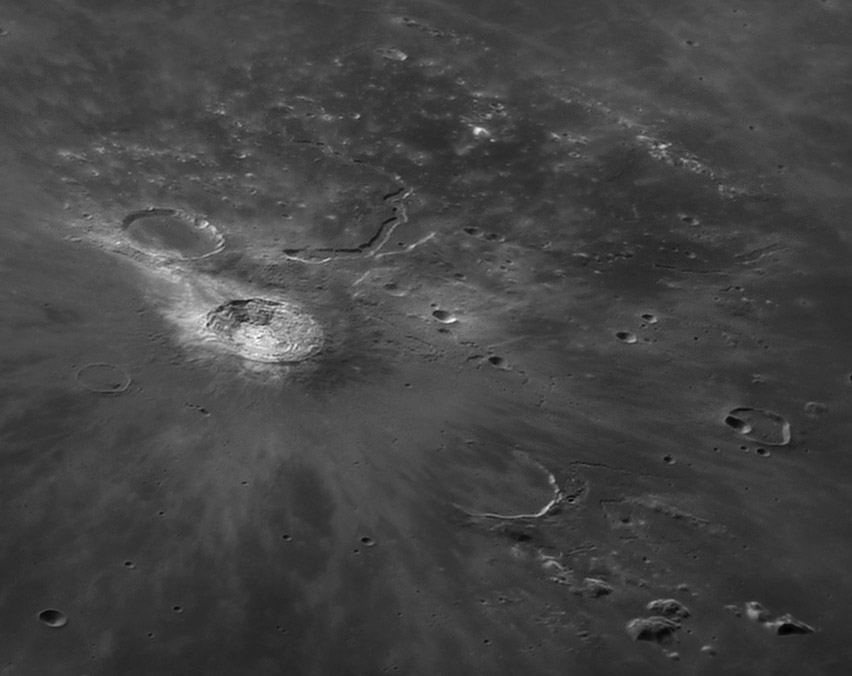
image by Alan Friedman
Compare Aristarchus and the adjacent Herodotus. Would 40 km wide, 3 km deep Aristarchus look like Herodotus (35 km wide, 1.3 km deep) if it had a 1.7 km filling of lava? That is the standard explanation for craters like Herodotus - they are just lava-filled normal impact craters. Many probably are, but I don’t know about all of them. Beneath the rim crest of Aristarchus there is a steep scarp, but it’s height is very irregular. The phenomenal image from Apollo 15 shows that the scarp disappears around part of the rim, so that if Aristarchus were flooded by a 1.3 km depth of lava it would still have an irregular, multi-scarped rim sticking up. Herodotus has only a little such complexity - it’s rim is basically different. Now look at the three other nearby flooded craters: Aristarchus F (left edge of image, 18 km diameter), Prinz (47 km) and at the center right, angular Krieger (22 km). Each of these has an inner rim that falls steeply to the mare surface, with little of the complexity of Aristarchus’ rim. F and Prinz have so little of the rims left that we can’t say how complex they might have been, but Krieger, like Herodotus, looks like a rim of a different type. From now on lets look more closely at inner rims of fresh craters.
Technical Details:
October 4, 2007, 11:07 UT. Astro-Physics 10″ Mak/Cassegrain at f30, DMK 41AF02 camera with green filter.
Related Links:
Rükl plate 18
Alan’s website.
Yesterday's LPOD: Lunar Land
Tomorrow's LPOD: Numbering the Marvels
COMMENTS?
Register, Log in, and join in the comments.



